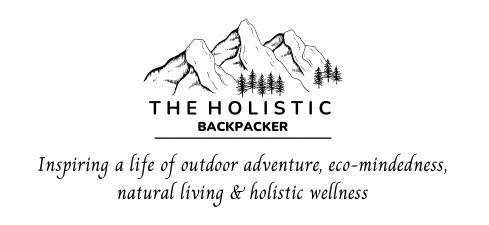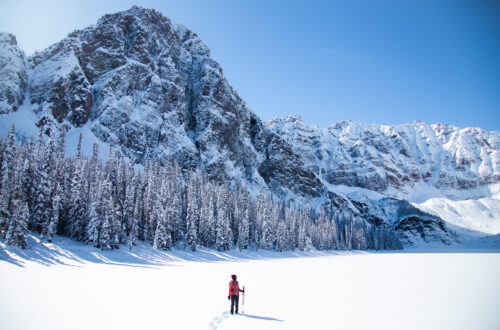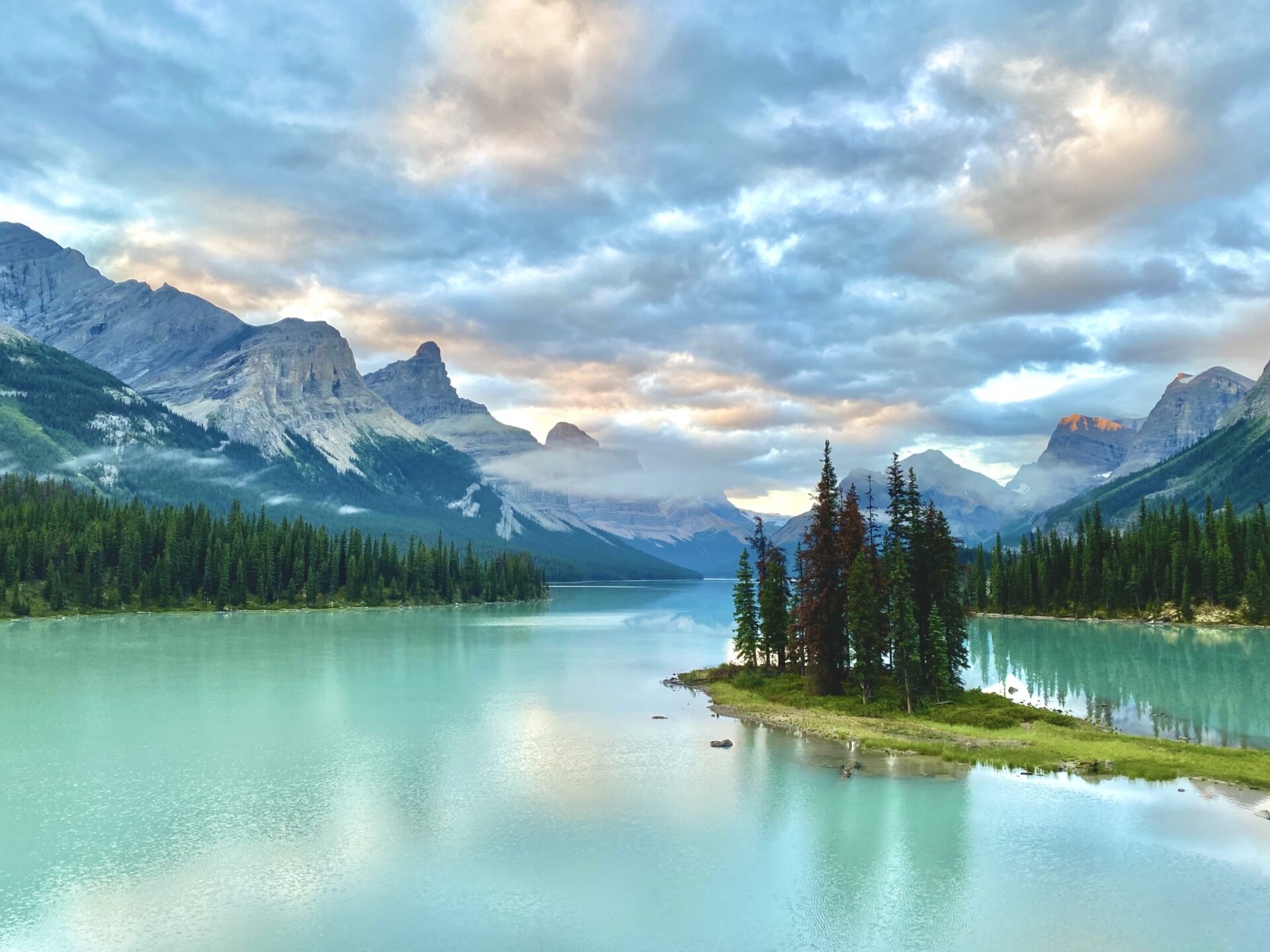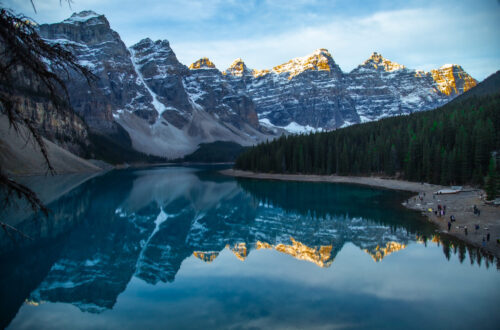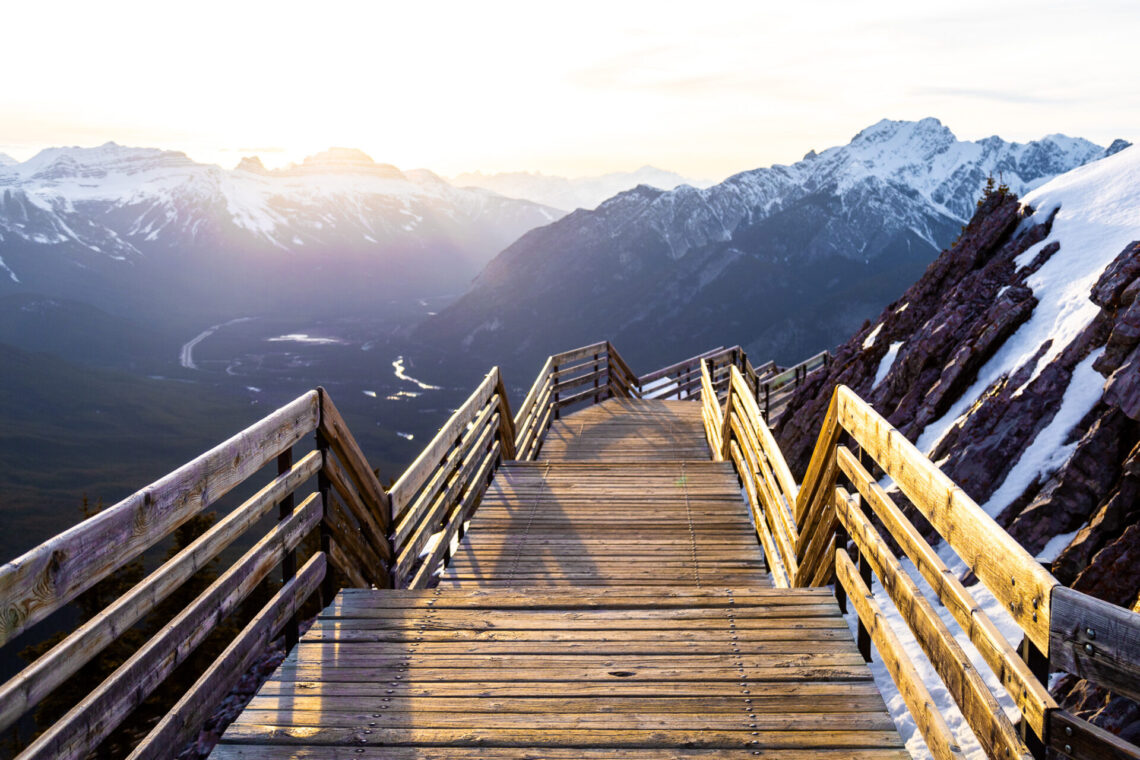
Sulphur Mountain Hike Guide + Gondola Information (Banff)
The Sulphur Mountain hike is one of Banff’s most beloved trails. The summit offers epic 360 degree views of the town and surrounding valleys, plus it’s accessible via hiking and a gondola.
I worked at the Banff Gondola the summer of 2020 which meant I was stationed at the summit 5 days a week. I used to hike the mountain before work so I’m quite familiar with the trail. In this blog post I’ll tell you everything you need to know about the Sulphur Mountain hike from a local’s perspective.
I’ll first go over important hiking information for Banff, where to stay in Banff, gondola information, hiking gear recommendations, followed up with stats for the Sulphur Mountain hike.
Skip Ahead:
- How to get to Sulphur Mountain trailhead
- Where to stay in Banff
- About the Sulphur Mountain hike
- Sulphur Mountain hike in winter
- About the Banff Gondola
- Hiking Banff’s Sulphur Mountain
- Canadian Rockies hiking tips
- Recommended hiking gear for the Rockies
As you read this post, please consider clicking the links throughout. These are affiliate links which means when you book a hotel or purchase a product, I make a small commission at no additional cost to you (full disclosure). These commissions fund The Holistic Backpacker and help me write more blog posts.
Thank you for supporting my work!
Banff Google Map: 600+ Pins
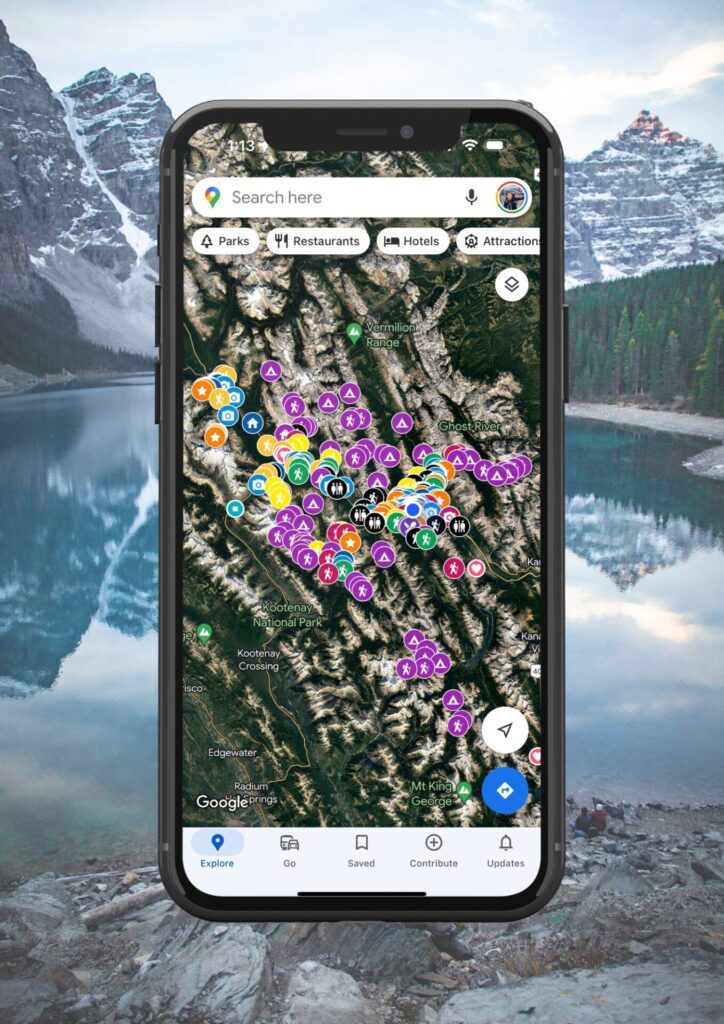
Get my 600+ Banff recommendations saved to your Google Maps app
Outdoors: 100+ hiking trails, backcountry campgrounds, ski resorts, waterfalls & lakes
Planning: lodging, restaurants, public washrooms & transit hubs
Things to do: tours, viewpoints & unique activities
I lived in Banff for years and know all the best spots!
My Featured Banff Blogs
Travel Guides
Banff Activities
Quick Banff Guide
First time visiting Canada? This page outlines all my travel tips for those new to Canada.
When to visit: this post breaks down each month in Banff with average temperatures and corresponding activities.
How to get to Banff: fly into Calgary International Airport. From here, rent a car (what I recommend), RV, or take one of the following shuttles to Banff:
- Budget: On-It runs during the summer months and Pop-a-Ride is a ride-share program. You can use my Poparide link to save $5 on your first trip.
- Professional shuttles: Banff Airporter and Brewster.
- Car rental: having access to a car is the best way to travel to/from/within Banff. This site compares the best local rates.
Best Activities in Banff: here are all my recommendations for the best tours, activities, and unique experiences in Banff & beyond.
Moraine Lake or Lake Louise: read my guide for how to get there with the new road closures. If you want to see Moraine Lake at sunrise, you can book a shuttle here.
Lodging & Camping: Here’s my guide for hotels in Banff (Organized by Category). If you’re visiting during peak summer (mid June to early September), make your lodging reservations FAR in advance. Front country and backcountry camping reservations must be made on the Parks Canada reservation system. The system typically opens in January and it’s recommended you make reservations then.
Reservations: for activities and restaurants should be made well in advance during summer. Get Your Guide and Viator are popular tour booking platforms whereas OpenTable is used for restaurants.
Parks Pass: You’ll need a National Park Pass for your vehicle for each day you’re in Banff. Passes can be purchased at the East Parks Gates, the Visitor Centre, or online. If you’ll be in any of Canada’s National Parks for more than 7 days in a 365 day period, an annual Discovery Pass offers a better rate than purchasing individual day passes.
Roam Transit: once you arrive in Banff, use the local transit service as much as possible to avoid parking issues. There are bus lines within town, plus lines to popular spots like Lake Louise and Johnston Canyon. The bus to Lake Louise should be reserved in advance.
Parking: the best spot to park is the free lot next to the train station. More information about parking in town can be found here and parking fees can be paid here. Bylaw is strict, so ensure you’re following parking rules exactly.
Wildlife Safety: 11 ways to stay safe from wildlife, bear safety, & bear basics.
Sulphur Mountain Hike
Sulphur Mountain Hike
How to Get to the Sulphur Mountain Trailhead
Sulphur Mountain hike

The Sulphur Mountain trailhead is located in Banff. The Sulphur Mountain trailhead is approximately 1hr 45mins (150kms) from the Calgary International Airport and 1.5hrs (143kms) from Golden.
The Sulphur Mountain parking lot is the upper lot used by the Banff Upper Hot Springs. Keep in mind it fills up fast on weekends, during holidays, and in summer. It’s recommended visitors park at the free parking lot next to the train station in town and take the bus up to the Sulphur Mountain trailhead to avoid parking issues.
The bus route is Line 1 with Roam Transit and fees are $2 per person, per trip. Fees can be paid via the ‘Token Transit‘ app or in exact change upon boarding.
If you’re looking for a place to stay in Banff, I break down the best options by category below.
ps – if you opt to stay at the Rimrock Resort Hotel, you’re within walking distance of the Sulphur Mountain hike.
Connect via socials:
Sign up for emails to receive a 25% discount on my travel maps.
Taylor ♡
Where to Stay in Banff
From hostels to camping to luxury hotels – Banff has accommodations for everyone. Here are my top recommendations for where to lodge in Banff based on every budget.
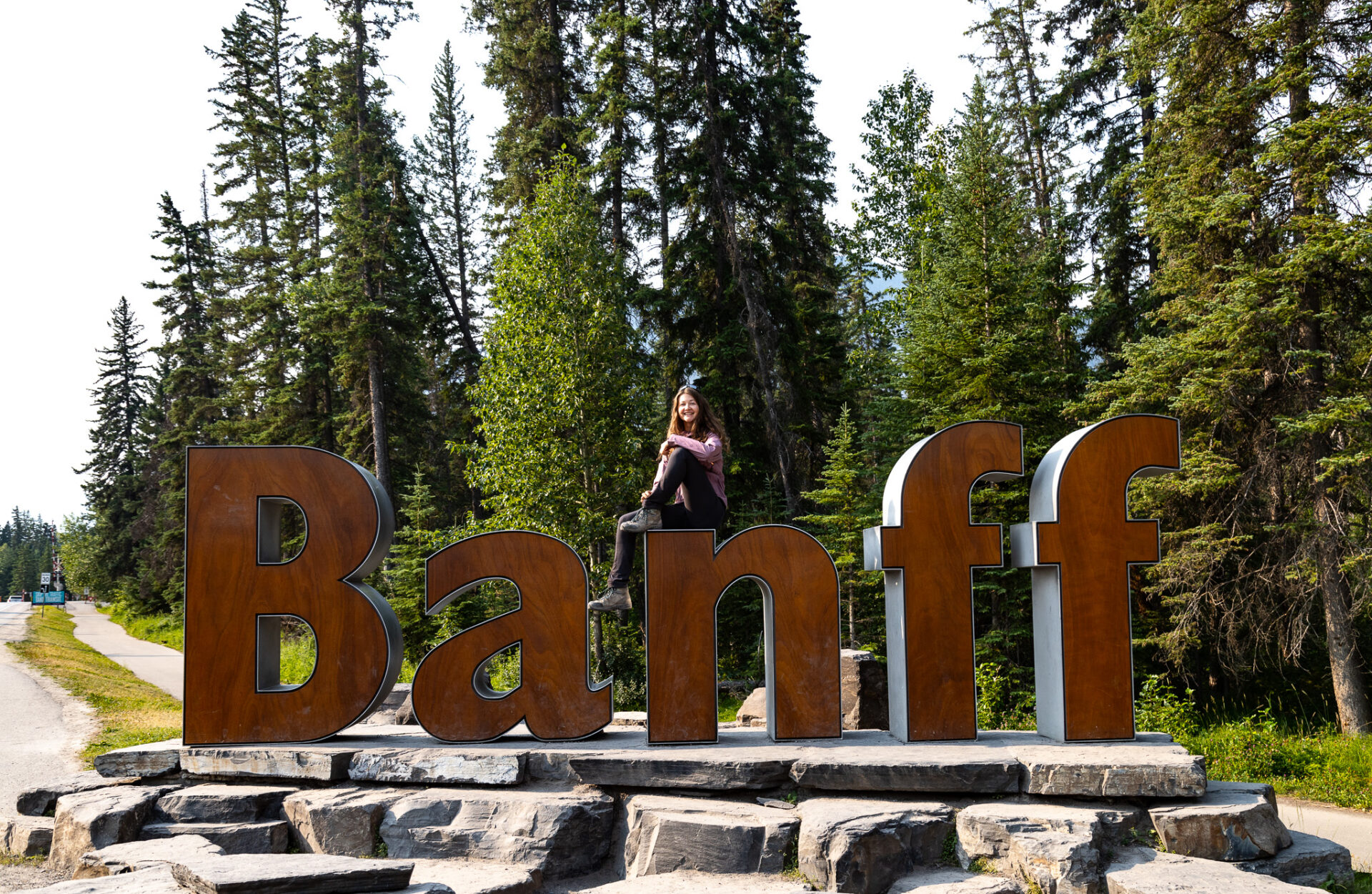
I recommend giving this post a read as I’ve listed every Banff hotel worth staying at and organized them by category.
- Hostels – Samesun Banff (best location + bar/restaurant on-site), Banff International Hostel (second best), and HI Banff.
- Budget hotels – Bow View Lodge and High Country Inn.
- Mid-range stays – Banff Park Lodge, Mount Royal, Elk & Avenue, and the Banff Caribou & spa.
- Luxury stays – Fairmont Banff Springs and the Rimrock Resort.
- Cabin retreats: Johnston Canyon Bungalows, Baker Creek, and Castle Mountain Chalets.
- Camping – reservation information can be found here. Ensure you book campsites far in advance as they’re full during summer.
- For those on ski trips: lodge on-mountain at Sunshine Village, stay near Norquay, and see my Lake Louise suggestions below.
Lodging Options Near Banff
Enjoy the nature and activities of Banff National Park, but lodge away from the busy tourist town centre at any of the following:
- Lake Louise – Fairmont Chateau Lake Louise (luxury), Paradise Lodge & Bungalows (500m from the lake), Lake Louise Inn (value stay), HI Lake Louise (hostel).
- Canmore – Malcolm Hotel (luxury), Stoneridge Mountain Resort (condo suites with fully equipped kitchens), Mountain View Inn (budget), Canmore Downtown Hostel & the Canmore Hostel (party hostel).
- Johnston Canyon – Johnston Canyon Lodge & Bungalows, Castle Mountain Chalets, and HI Castle Mountain Hostel.
- Yoho National Park – Emerald Lake Lodge and Cathedral Mountain Lodge.
- Kootenay National Park – Storm Mountain Lodge & Cabins.
- Kananaskis Country – Mount Engadine Lodge and Kananaskis Mountain Lodge (luxury), Crosswaters Resort (mid-range), and HI Kananaskis Wilderness Hostel (budget).
About the Sulphur Mountain Hike
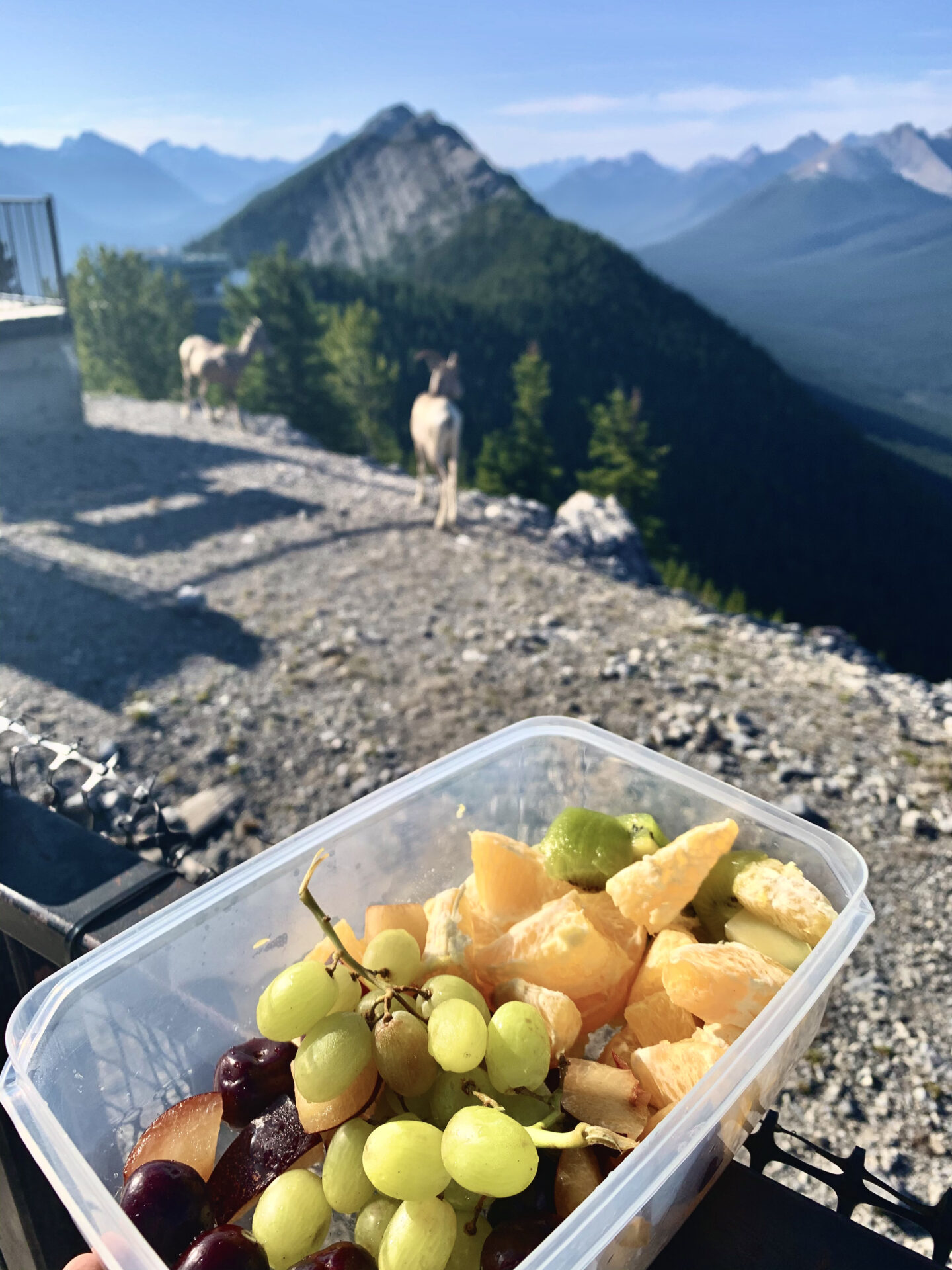
- Distance: 10.9km
- Elevation gain: 756m
- Rated: moderate
- Type of trail: out & back
- Estimated time: 4hrs of active hiking time, but budget more time to explore the gondola facilities
- Bikes and skis are not allowed on the Sulphur Mountain trail
- The Sulphur Mountain hike is suitable for kids and families
- Dogs can hike Sulphur Mountain (as long as they’re leashed)
- Sulphur Mountain can be hiked year round – I go over hiking information for Sulphur Mountain in winter next
- You will have cell service on the Sulphur Mountain trail and at the summit. There’s also free wifi in the gondola building
- On average, the Sulphur Mountain hike takes around 1.5-2hrs on the way up and 1-1.5hrs on the way down
- Hikers CAN utilize the gondola’s facilities. You do not need a gondola ticket to enter the building
Banff’s Sulphur Mountain hike is very busy and easy to follow which makes this a great trail for those looking to try out solo hiking. The Sulphur Mountain hike follows 27 switchbacks over a packed trail surface with minimal tripping hazards like rocks or branches.
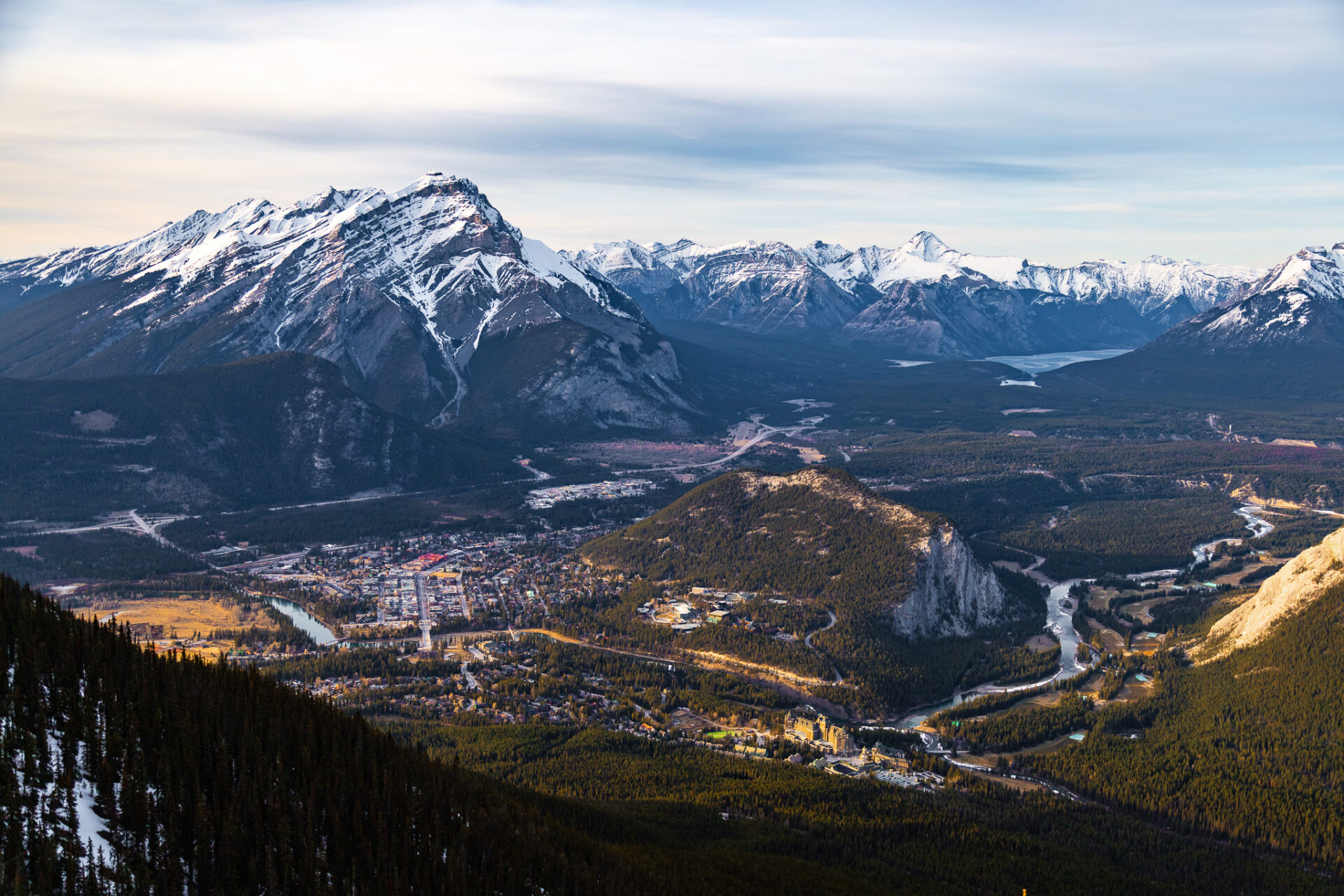
ps – if hiking isn’t quite your thing, you can opt to take the Banff Gondola one-way or roundtrip instead.
The Sulphur Mountain hike is completely engulfed by trees which means you’ll have minimal views until the summit, however when you reach it, the views open up in all directions providing you with epic sights over the town of Banff and mountains like the famous Cascade and Rundle.
Please stay on trail and do not take “shortcuts” when completing the Sulphur Mountain hike. This area sees thousands of hikers annually and staying on the switchbacks helps preserve the landscape.
Banff Google Map: 600+ Pins

Get my 600+ Banff recommendations saved to your Google Maps app
Outdoors: 100+ hiking trails, backcountry campgrounds, ski resorts, waterfalls & lakes
Planning: lodging, restaurants, public washrooms & transit hubs
Things to do: tours, viewpoints & unique activities
I lived in Banff for years and know all the best spots!
Alternate Trail: The Sulphur Mountain Westside Trail ventures up the backside of the mountain with Cave & Basin as the trailhead. This route is longer with more elevation, but sees significantly less hikers and has better views.
For the more advanced hikers reading this blog post – at the top of Sulphur Mountain you can continue on to the Sulphur Mountain Traverse Route which is a fun and beautiful extension of the Sulphur Mountain hike to the “true” Sulphur summit. It requires route finding and scrambling – not beginner friendly.
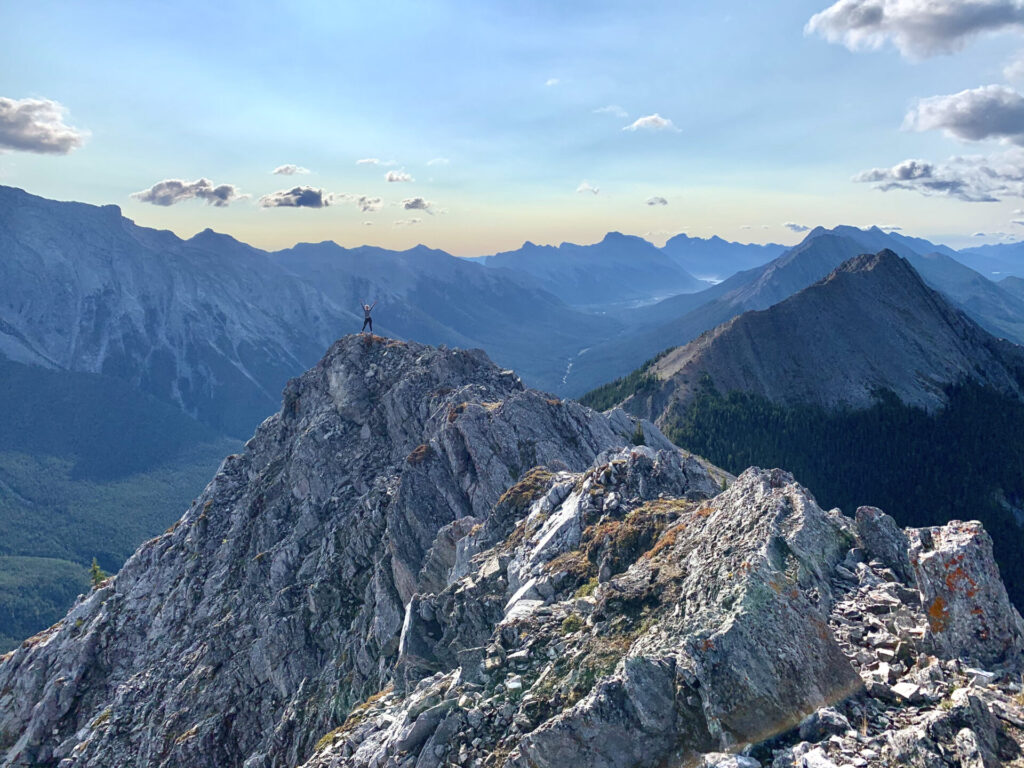
Sulphur Mountain Hike in Winter

Sulphur Mountain is one of the best hikes in Banff if you’re new to winter hiking. Like I previously mentioned the trail is well trafficked which means you’ll pass many people on the way up and down. The vast amount of people on the trail means it’s almost always packed down and you won’t need to wear snowshoes – unless you’re hiking up after a fresh snowfall.
Spikes are always recommended if you’re hiking Sulphur Mountain in winter as they’ll help you maintain traction on the slippery, snowy surface. Poles are also helpful for maintaining balance. Snow can be found on the Sulphur Mountain trail until June, so you’ll need to keep this in mind when you pack for your Sulphur Mountain hike.
I’ve linked all my go-to winter hiking equipment above.
There’s no real avalanche risk on Sulphur Mountain as long as you stay on the trail, however if you’re interested you can find more information about the avalanche report here.
If you plan on hiking the backside of Sulphur Mountain in winter, you’ll be exposed to avalanche terrain and waist deep snow.
Top Tours & Excursions in Banff
Banff Gondola – epic views from the top of Sulphur Mountain.
Banff Hop on Hop off – explore the park at your own pace.
Lake Minnewanka Cruise – take a scenic boat ride down the largest lake in Banff.
Moraine Lake sunrise – chartered bus to see alpenglow on Canada’s most beautiful lake.
Norquay via ferrata – epic beginner friendly climbing route across iron bars on Mt Norquay.
Sunshine Meadows Gondola – find wild alpine flowers and hike around pristine alpine lakes.
Click here for a complete list of the Banff tours I recommend:
Sulphur Mountain hike is great for dogs
About the Banff Gondola
Sulphur Mountain is special as it’s one of the only hikes in Canada with mountaintop facilities. The Banff Gondola offers multiple restaurants, an interpretive centre, a viewing deck with fire pits, and a boardwalk over to the neighbouring Sanson’s Peak.
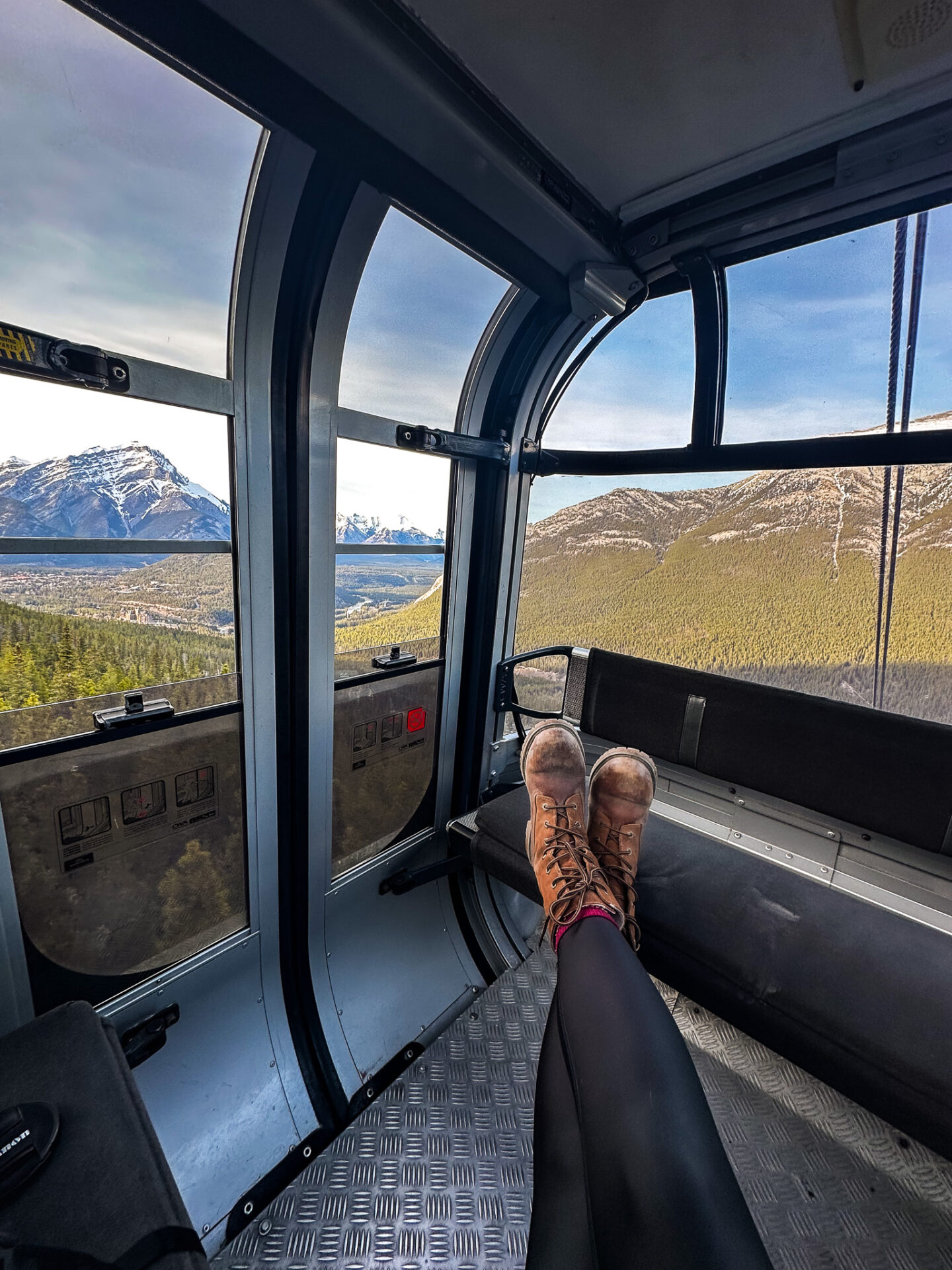


The following are the key takeaways for the Banff Gondola. If you’re looking to book a gondola ride, you can do so here.
- Dining – the Banff Gondola offers fine dining at Sky Bistro (ensure you have reservations), casual dining at Northern Lights, and grab-n-go foods at Castle Mountain Coffee Co. In the summer months you can visit the Peak Patio which is Banff’s highest patio.
- Hiking – there’s a wooden boardwalk that goes over to Sanson’s Peak. The walk takes round 10-15 minutes one-way and does not require “proper” hiking gear or sturdy footwear to complete.
- Indoor Entertainment – an interpretive centre with information pertaining to local wildlife and geography, a theatre, and a gift shop.
- Events: the Banff Gondola offers various seasonal events like a winter lights display, live music, and more.
- One-way tickets: If you’re looking to hike Sulphur Mountain and take the Banff Gondola down, one-way tickets are available for purchase.
I recommend budgeting 1-2 hours to explore to Sulphur Mountain Gondola facilities. Budget slightly more if you’re planning to have a meal at one of the restaurants.
Hiking Sulphur Mountain

The Sulphur Mountain hike starts out at the trailhead by the Banff Upper Hot Springs. Right away the trail gains elevation and it does not stop until you reach the summit. Although not overly steep, the continuous elevation gain can be tiring depending on your fitness level and previous hiking experience.
The 27 switchbacks and tree coverage makes it tricky to know how far you’ve hiked, however when you see gondola cabins passing overhead you’ve made it about halfway.
Closer to the top you’ll hear flowing water which is coming from a small waterfall. There’s a side-trail which brings you to a viewpoint of it, however I’d only suggest taking this side-trail once the snow is gone. Walking over this unstable snow means you could fall through to a hollow cavity underneath the surface.
Keep in mind there are various forms of wildlife on Sulphur Mountain like bighorn sheep, deer, bears, etc. Hikers are encouraged to bring bear spray.
As soon as you reach the Sulphur Mountain summit you can access the bathrooms, water refill station (located on the 2nd floor), and restaurants. Typically hikers reach the summit in 1.5-2hrs. From here hikers can continue on the boardwalk to reach Sanson’s Peak.
Sulphur Mountain hike – is the Sulphur mountain hike hard
Banff Google Map: 600+ Pins

Get my 600+ Banff recommendations saved to your Google Maps app
Outdoors: 100+ hiking trails, backcountry campgrounds, ski resorts, waterfalls & lakes
Planning: lodging, restaurants, public washrooms & transit hubs
Things to do: tours, viewpoints & unique activities
I lived in Banff for years and know all the best spots!
Canadian Rockies Hiking Tips
Guides for hikes in: Banff | Jasper | Kananaskis | Kootenay | Waterton | Yoho
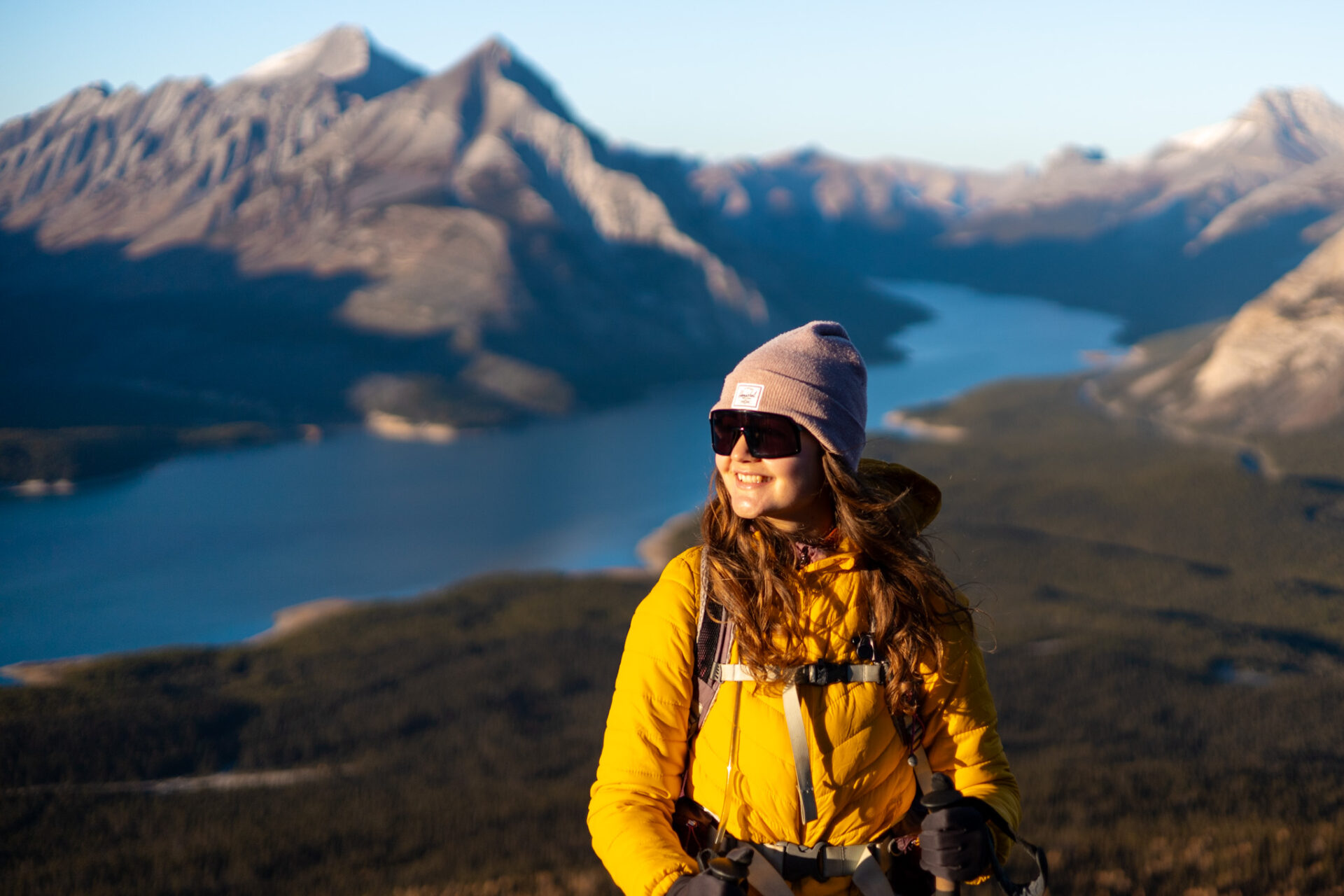
Approach: take a conservative approach if you’re new to hiking and ensure you have lots of daylight. Trails here are steep, long, and can have challenging terrain.
Best Time of Year: July to early September is the most reliable for weather and minimal snow. This post outlines each month in Banff.
- Hiking in winter? Stick to easy, well-trafficked trails unless you’re knowledgeable about avalanche terrain. I always check the avalanche bulletin and use both Caltopo and Google Maps satellite view to survey terrain before hiking.
Pets: leashed dogs are allowed on all trails in the Rockies unless otherwise stated.
Safety: tell someone where you’re going and when you plan to return. I always carry the Garmin InReach Mini for additional safety as there’s minimal cell service in the Rockies.
Wildlife: carry bear spray and know how to use it. Here are bear safety tips from Parks Canada.
Maps: I purchase the Alltrails+ membership and download my maps before hiking so I always know where I am.
Helpful Canadian Rockies Hiking Posts:
More of my detailed hiking tips can be found here
Canadian Rockies Camping Tips
Plan to go camping in Banff and the Canadian Rockies? Here are some useful things to know.
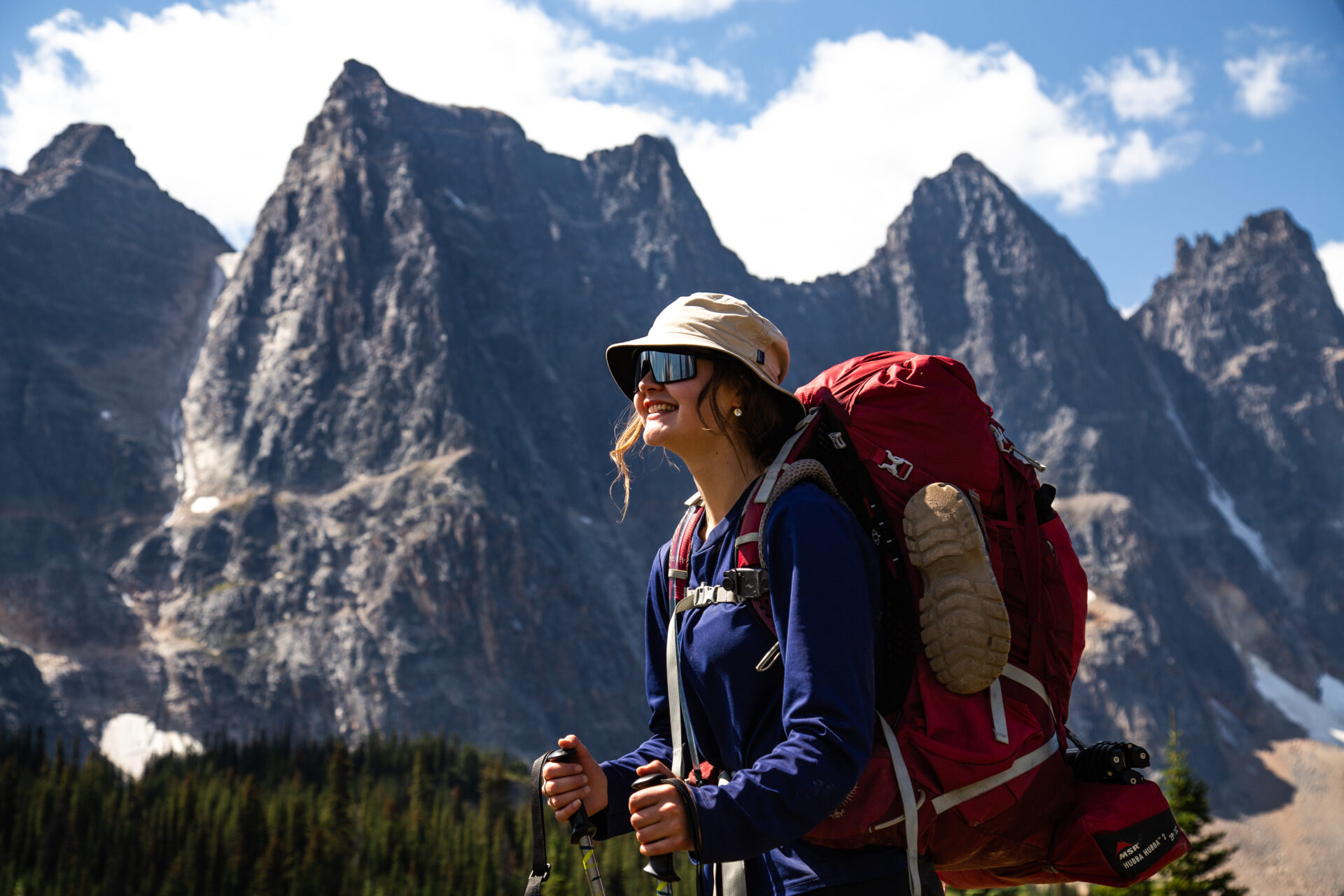
Unless you’re on some form of public land – random camping and free car camping is not permitted in the Canadian Rockies. If you do plan to “free” camp in the designated areas, you must purchase the Public Lands Camping Pass.
Camping Reservations: reservation day (when bookings go live) usually occurs in January. Most summer camping reservations must be made then as sites fill up instantly.
- National park camping reservations can be made here and Kananaskis reservations can be made here: backcountry | front country.
- Can’t get a reservation? Sign up for cancellation notifications via Schnerp. I use this resource frequently and have found cancellations at the most popular spots in the Rockies like Lake O’Hara.
When to Camp: most campgrounds close for the winter, however a few remain open year round. July-August is best for backcountry camping. Keep in mind, temperatures are typically very cold at night even during peak summer.
Hut Camping: the Alpine Club of Canada has established alpine huts scattered around the Rockies and beyond. These huts must be booked in advance and cater to backcountry skiers, hikers, and climbers.
Packing advice and my personal gear recommendations can be found in my Backcountry Gear Guide.
Sulphur Mountain Hike
Recommended Hiking Gear for the Rockies
Below are my personal recommendations and favourite products for Canadian Rockies specific hiking gear.
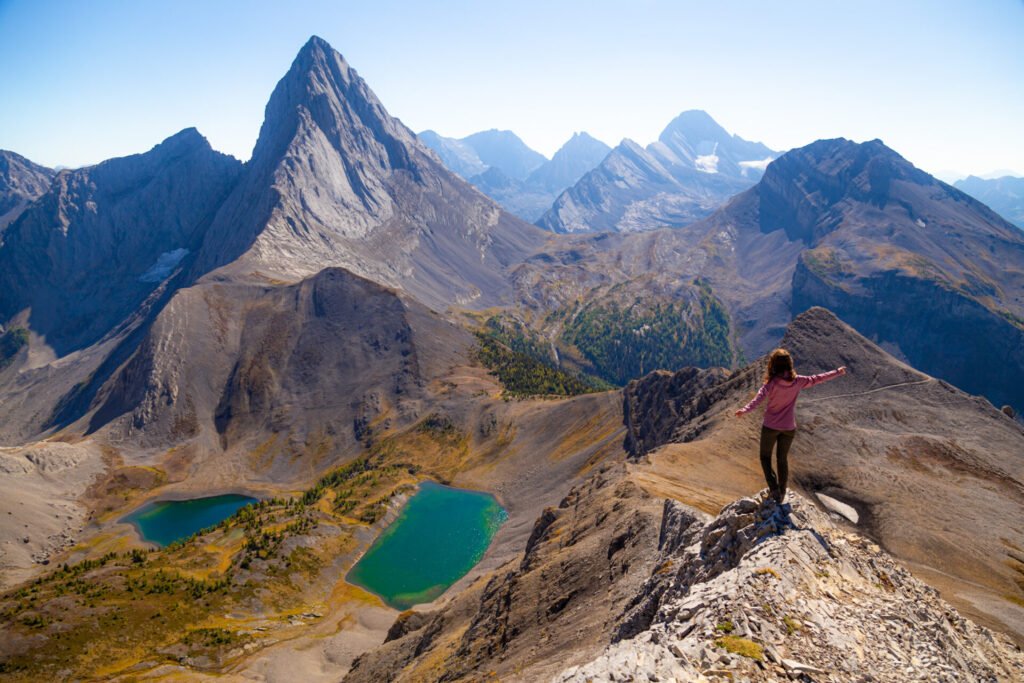
Backpack: I use the Osprey Sirrus 24L (men’s edition) for quick day hikes and the Osprey Sirrus 36L (men’s edition) for longer hikes requiring more gear.
Hydration: I use the 3L Hydrapak to carry water and always have aquatabs on-hand if I need to filter water.
Footwear: I currently use the Scarpa Kailesh (men’s version) and full cushion crew Smartwool socks.
Safety: I always carry the Garmin Inreach Mini 2 as my satellite device.
Here are my detailed posts for Canadian Rockies hiking gear
Rockies Hiking Gear: Winter
If you’re planning to hike the Rockies in winter, you’ll need to add a few more items to your gear arsenal.
The items below are what I use.

Spikes: I love Hillsound’s trail crampon which provides killer traction and long-lasting durability.
Snowshoes: I use TSL’s sustainable Symbioz Hyperflex snowshoe, however any snowshoe from TSL is top of the line. This one is their midrange model which offers similar features at a light weight and better price point.
Gaiters: this is my top pick for gaiters which are great for keeping water and snow out of your boots. If you’re on a budget, these ones are a little more cost effective and have plenty of great reviews.
Warmth: I use Aurora Heat’s reusable hand + ultra foot warmers for both hiking and skiing. They’re made of beaver pelt by Indigenous women in Canada’s Yukon.
Softshell Pants: these are my favourite pants (men’s sizing) for cold weather hiking. They’re water resistant, wind resistant, and warm. If you’re reading from the USA, these REI pants are equivalent: women’s sizing | men’s sizing.
Sulphur Mountain hike
Banff Google Map: 600+ Pins

Get my 600+ Banff recommendations saved to your Google Maps app
Outdoors: 100+ hiking trails, backcountry campgrounds, ski resorts, waterfalls & lakes
Planning: lodging, restaurants, public washrooms & transit hubs
Things to do: tours, viewpoints & unique activities
I lived in Banff for years and know all the best spots!
Sulphur Mountain hike
Happy adventuring!
Taylor ♡
Like This Post?
Share with friends or save it for later!
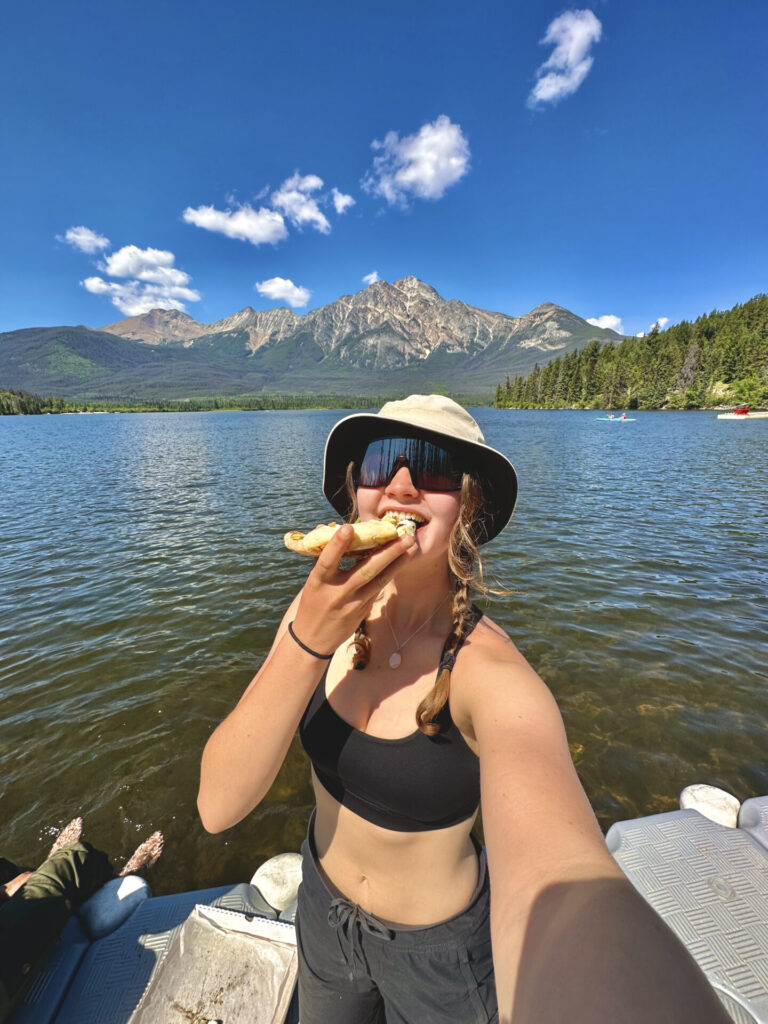
About the Author
HI, I’m Taylor – the voice behind The Holistic Backpacker.
After moving to Banff National Park in 2020 I became an outdoor adventure enthusiast and vowed to never stop exploring.
I now spend my days travelling the world, climbing mountains, and spending nights under the stars in the Canadian Rockies backcountry.
I created The Holistic Backpacker so I could share my adventures and help connect people like you with the same amazing experiences.


